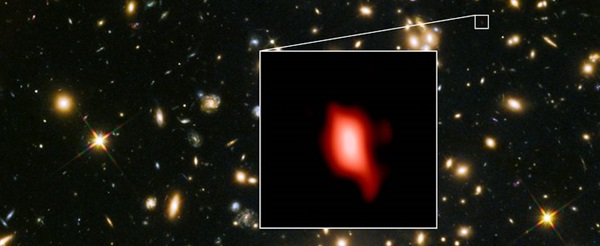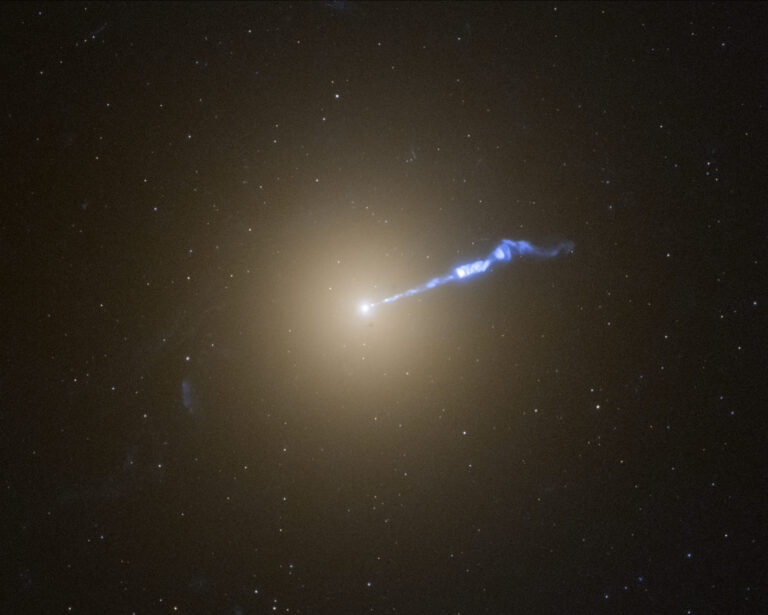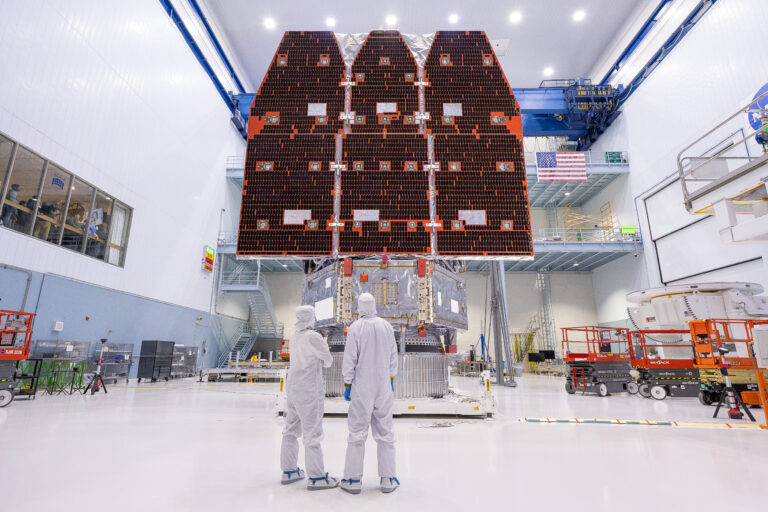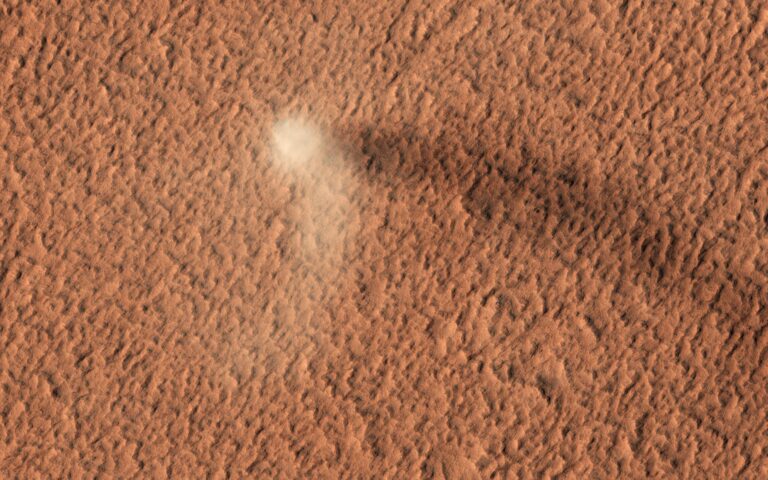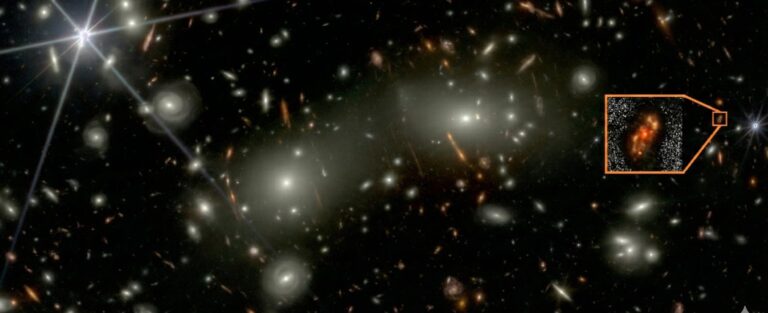Key Takeaways:
First starlight
In a new study set for publication tomorrow in the journal Nature, an international team of astronomers used this impressive array to observe an extremely distant galaxy called MACS1149-JD1. Within the galaxy, the team was surprised to discover faint signals of ionized oxygen that were emitted almost 13.3 billion years ago (or 500 million years after the Big Bang).
This is not only the most distant detection of oxygen ever made by any telescope, but more importantly, the discovery of the ancient oxygen serves as clear evidence that stars began forming just 250 million years after the Big Bang, when the universe was less than 2 percent its current age.
Before the first stars kicked on, the universe was a relatively boring place, consisting primarily of radiation leftover from the Big Bang, as well as hydrogen, helium, and a trace amount of lithium. However, many of the heavier elements we take for granted today (such as carbon and oxygen) did not exist before the first stars. This is because stars are the burning crucibles that convert hydrogen and helium into larger elements, so without stars, there is no oxygen.
“I was thrilled to see the signal of the distant oxygen in the ALMA data,” said lead author Takuya Hashimoto, a researcher at Osaka Sangyo University and the National Astronomical Observatory of Japan, in a press release. “This detection pushes back the frontiers of the observable universe.”
One of the most burning questions on astronomers’ minds is: When did the first galaxies emerge from total darkness? This period, commonly referred to as ‘cosmic dawn,’ is of particular interest because it marked the transition from a hot, dense, and nearly homogeneous universe to the universe we are more familiar with today — one filled with stars, planets, nebulae, and people.
“Determining when cosmic dawn occurred is akin to the Holy Grail of cosmology and galaxy formation,” said co-author Richard Ellis, an astronomer at University College London, in a press release. “With these new observations of MACS1149-JD1, we are getting closer to directly witnessing the birth of starlight! Since we are all made of processed stellar material, this is really finding our own origins.”
By detecting the most distant oxygen ever found, astronomers have shown that the first stars formed unexpectedly early.
ESO

